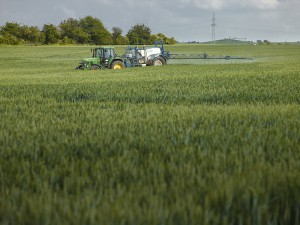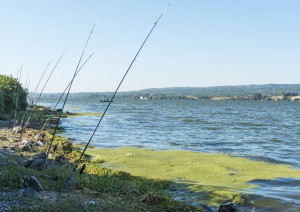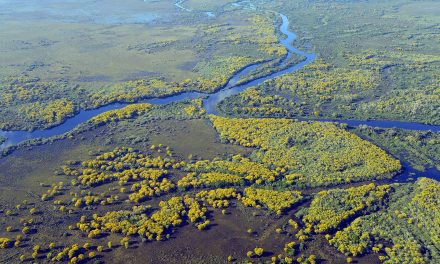
Agriculture is responsible for the major part of the input of chemicals into streams and rivers. Pesticides dominate the chemical burden of freshwater ecosystems. Photo: André Künzelmann, UFZ

Rivers such as the Danube are fascinating ecosystems. They provide important ecosystem functions and services such as recreation, fishing and drinking water for millions of people. Unfortunately, these ecosystems are subject to chemical inputs from adjacent urban areas, agriculture and industry. This leads to a chemical cocktail that adversely affects algae and freshwater animals and carries potential risks for humans. Photo: André Künzelmann/UFZ
European Union member states have called for substantial improvements in freshwater quality by 2015 through the Water Framework Directive. While the European Environment Agency recently released a report on the excellent water quality of swimming beaches, a large-scale study by the Institute for Environmental Sciences Landau together with the Helmholtz Centre for Environmental Research, both in Germany, shows that ecological directive targets will likely not be met due to the high levels of toxics in European freshwater. Current measures for the improvement of water quality do not account for the effects of toxic chemicals. EU requirements and targets regarding water quality currently focus primarily on the occurrence of so-called priority substances, around 40 chemicals classified as being particularly hazardous to the aquatic environment.
The study demonstrates for the first time on a pan-European scale that the ecological risks posed by toxic chemicals are considerably greater than has generally been assumed. Together with their fellow French and Swiss researchers, the scientists from Landau and Leipzig have investigated the exceedance of risk thresholds for three groups of organisms, namely fish, invertebrates, and primary producers in the river basins of major stream networks, such as the Danube and the Rhine River at a pan-European level. Chemical toxicity represents an ecological threat to almost half of all European bodies of water, and in approximately 15% of cases, the biota in freshwater systems may even be subject to acute mortality. The primary factors contributing to chemical contamination of aquatic ecosystems are discharged from agricultural activities, urban areas, and municipal sewage treatment plants. Pesticides were by far the major toxicants of freshwater systems, although organotin compounds, brominated flame retardants, and combustion-derived polycyclic aromatic hydrocarbons also occurred at critical levels of concentration.




